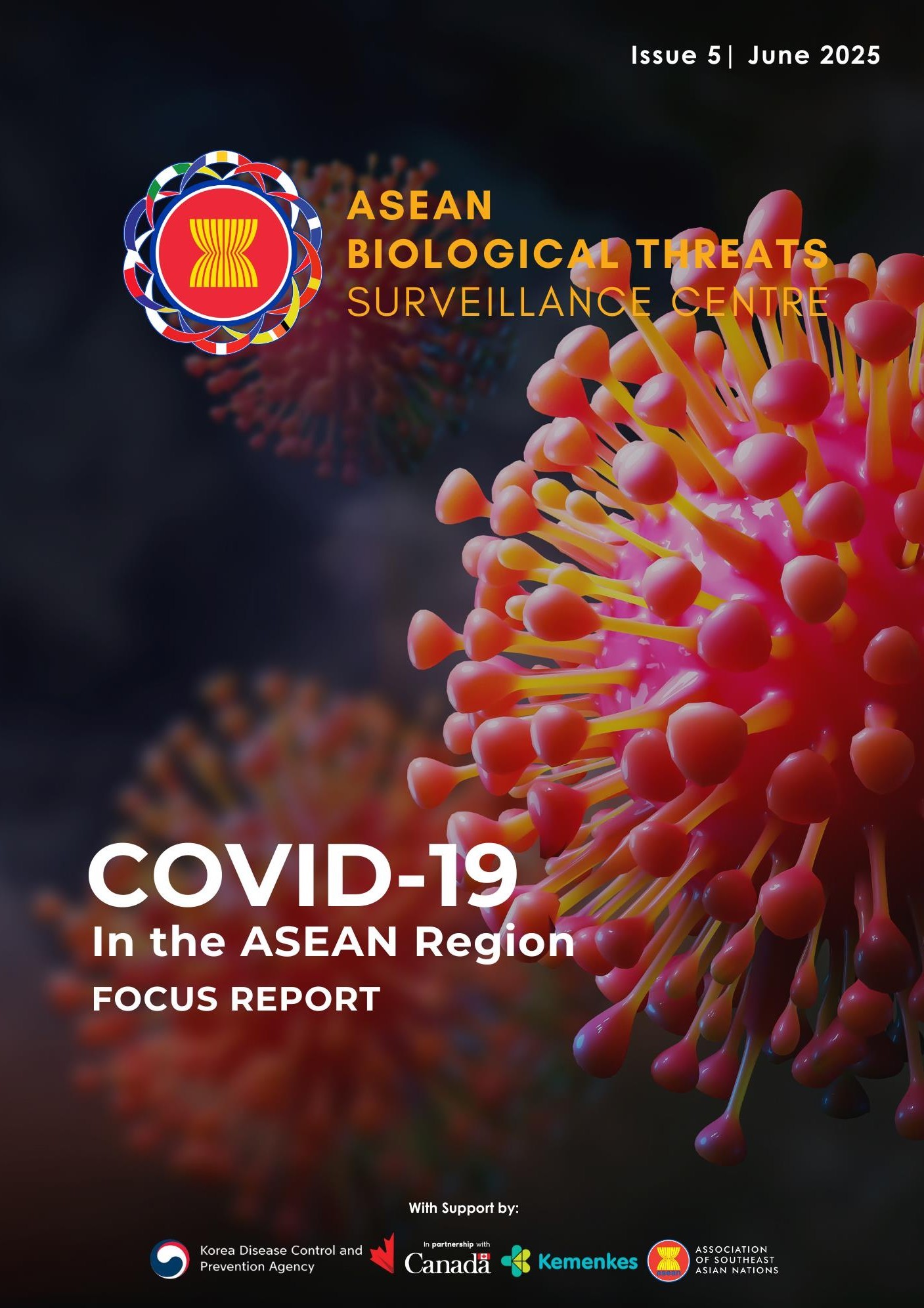ASEAN Biological Threats Surveillance Centre : COVID-19 in The ASEAN Region Focus Report 2025
ASEAN Biological Threats Surveillance Centre : COVID-19 in The ASEAN Region Focus Report 2025
Focus Report
June 05, 2025
ASEAN Biological Threats Surveillance Centre : COVID-19 in The ASEAN Region Focus Report 2025
Time Period Covered June 05, 2025 - June 05, 2025
On December 31, 2019, the WHO China Country Office was notified of a cluster of pneumonia cases of unknown cause in Wuhan, Hubei Province (WHO, 2020). By January 3, 2020, 44 cases had been reported, including 11 severe and 33 stable. The implicated seafood and live animal market was closed on January 1 for sanitation, and all patients were isolated and treated in Wuhan medical facilities. Most presented with fever and some with breathing difficulties, while chest radiographs showed invasive lung lesions. Preliminary investigations found no clear evidence of human-to-human transmission or healthcare worker infections. As of January 5, the source remained unclear, though animal exposure was suspected. Given the concentration of cases, WHO advised continued surveillance of respiratory infections but did not recommend travel restrictions or specific measures for travellers, except that those with symptoms during or after travel should seek medical attention and disclose their travel history. On January 7, 2020, Chinese authorities identified a nCoV, isolated and ruled out other respiratory pathogens such as influenza, SARS-CoV, and MERS-CoV and shared the genetic sequence of the virus on January 12 to support global diagnostic development (WHO, 2020a). As of January 12, 41 confirmed cases had been reported, including seven severe cases, six recoveries, and one death in a patient with underlying conditions. No cases had been reported outside Wuhan at that time, and WHO expressed confidence in the ongoing investigations and China's commitment to transparency.

 ASEAN Biological Threats Surveillance Centre : COVID-19 in The ASEAN Region Focus Report 2025
ASEAN Biological Threats Surveillance Centre : COVID-19 in The ASEAN Region Focus Report 2025